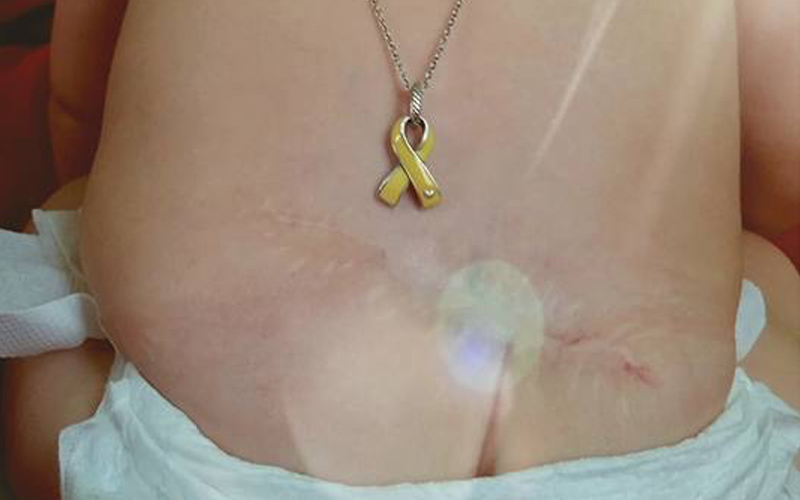My little boy is part of that 0.4. Spina bifida is a main diagnosis that is followed by what type of spina bifida that person may have.
There are three types one can be diagnosed with, spina bifida occulta, meningocele, and myelomeningocele.
Although it is considered the worst of the three, the most common that follows a spina bifida diagnosis, is myelomeningocele.
This is the one my son was diagnosed with, at just 20 weeks gestation.
It can be seen through ultrasound, if the tech or doctor is viewing the spine or one of the most common markers; the brain. That isn’t to say that it can be missed in an ultrasound, but the brain would show what is known as the banana or lemon marker.
But before we get into this, let us backtrack to what spina bifida (we will focus on myelomeningocele) is.
This happens when the spine fails to completely form together resulting in a sac that protrudes from the opening which contains part of the spinal cord and nerves. The fetus faces severe nerve damage as the sac is no longer protected by bone structure and is open to physical damage and damage from the amniotic fluid.
The sac can protrude from anywhere on the spine, but the most common are found at the bottom near the S and T vertebra.
Because the spina column is now open, cerebrospinal fluid is lost into the amniotic fluid and can actually accumulate with failure to properly drain from the brain. This is called hydrocephalus. This is a big marker through ultrasound because it is shown as water on the brain.
If the hydrocephalus is severe, it can damage the brain and even halt further growth.
The banana or lemon marker I mentioned above, is a common marker, because the spinal column has lost most of the cerebrospinal fluid that regularly allows our spine to freely move up and down without damaging it.
This results it the hind brain, cerebellum, having a pulling effect on it, literally pulling it into the first spinal C vertebrae.
Let’s say you have a roll of play dough in the shape of an oval, and you pull on only the middle section. It will soon resemble the shape of a banana or dumbbell even.
This can lead to the diagnosis of Chiari malformation.
All of which are common “hand-in-hand” diagnosis with spina bifida myelomeningocele. My son’s spinal opening occurs in the lower region of the spina and because of the damage it faced during pregnancy, his nerves weakened and even experienced paralysis in his lower limbs.
Because many of our processed foods now contain folic acid, which is said to lower the risks of a neural tube defect, spina bifida is considered rare.
Unfortunately there is so much more to research, regarding folic acid deficiencies or underlining gene mutations such as MTHFR that can hinder these processed foods useless to guarding our bodies against such diagnosis.
My family and I have come all too familiar with what spina bifida is, according to the textbooks and articles, and what it actually is for our family.
A precious little boy, who is 1 in 1000.
